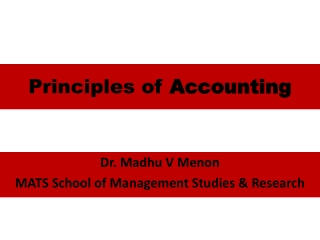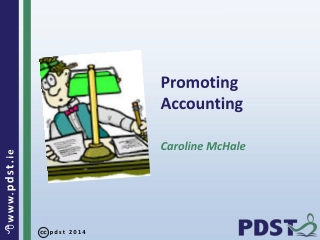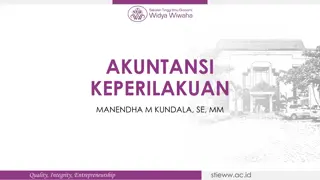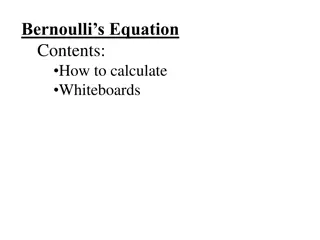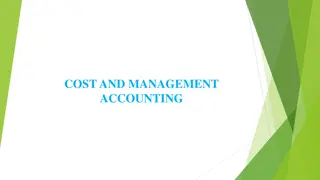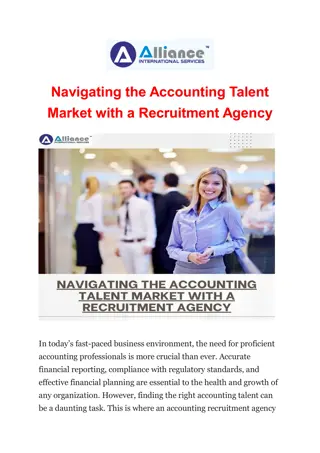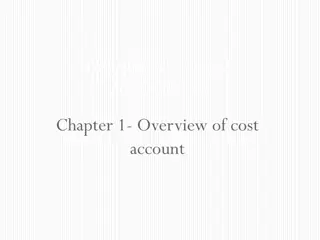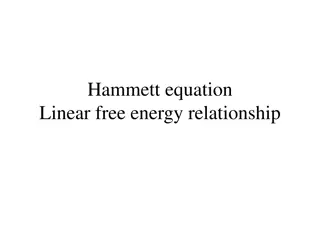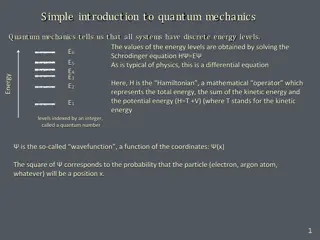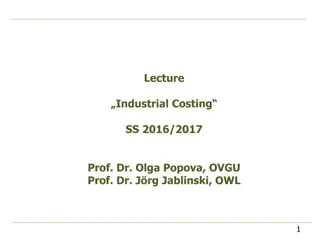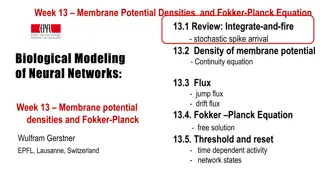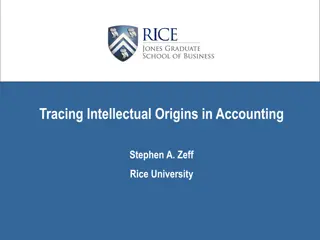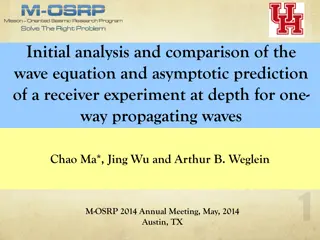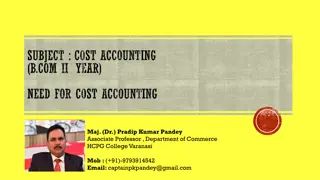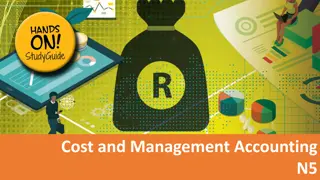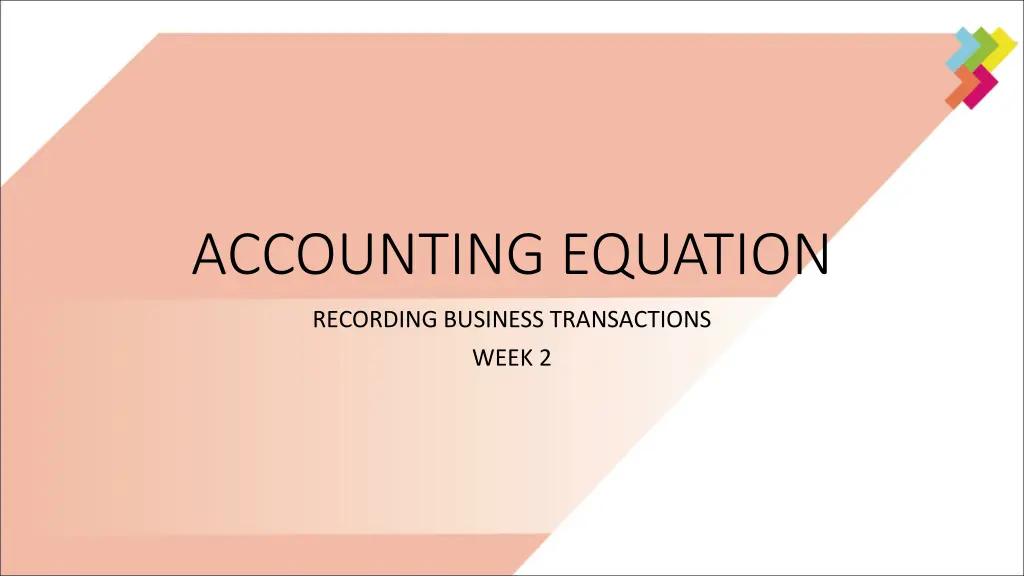
Understanding the Accounting Equation in Business Transactions
Learn about the accounting equation, which shows the relationship between assets, liabilities, and capital in recording business transactions. Discover how to calculate net assets, capital contributions, and more through practical examples and explanations.
Download Presentation

Please find below an Image/Link to download the presentation.
The content on the website is provided AS IS for your information and personal use only. It may not be sold, licensed, or shared on other websites without obtaining consent from the author. If you encounter any issues during the download, it is possible that the publisher has removed the file from their server.
You are allowed to download the files provided on this website for personal or commercial use, subject to the condition that they are used lawfully. All files are the property of their respective owners.
The content on the website is provided AS IS for your information and personal use only. It may not be sold, licensed, or shared on other websites without obtaining consent from the author.
E N D
Presentation Transcript
ACCOUNTING EQUATION RECORDING BUSINESS TRANSACTIONS WEEK 2
DEFINITIONS: Capital/Assets/Liabilities DEFINITIONS: Capital/Assets/Liabilities Capital Resources supplied by the owner Assets Actual resources in the business. What the business owns. Liabilities Amounts owing to third parties for the assets of the business. What the business owes
Accounting Equation By adding up what the accounting records say belongs to a business and deducting what they say the business owes, you can identify what a business is worth according to those accounting records. Assets are contributed by Capital and Liabilities The whole of financial accounting is based upon this very simple idea. ASSETS = LIABILITIE + CAPITAL LIABILITIES = ASSETS CAPITAL CAPITAL = ASSETS LIABILITIES https://www.youtube.com/watch?v=T2l9zvz5oAE
https://www.youtube.com/watch?v=VSMP-oAIqCA https://www.youtube.com/watch?v=VSMP-oAIqCA
The statement of financial position and the effects of business The statement of financial position and the effects of business transactions transactions The accounting equation is expressed in a financial report called the statement of financial position (Balance Sheet). Balance sheet (SOFP) of Bill as at 3 May 2019 Balance sheet (SOFP) of Bill as at 3 May 2019 Assets Shop 32,000 Inventory 2,000 Bank 28,000 62,000 Less Liabilities: Jones Ltd (2,000) Net Assets 60,000 Capital 60,000 Assets = Liabilities + Capital Assets Liabilities = Capital
EXAMPLE 1 ACCOUNTING EQUATION Assets Liabilities Capital 102,000 62,000 ? A ? 45,000 55,000 B C 300,000 ? 200,000
EXAMPLE 1 SOLUTION Assets Liabilities Capital 102,000 62,000 40,000 A B 100,000 45,000 55,000 C 300,000 100,000 200,000
EXAMPLE 2 Which are assets and which are liabilities? Premises Bank balance Loan from Mr T Accounts receivable Machinery Inventory Owing to bank Loan from bank Accounts payable Motor vehicle Shop fittings Cash
EXAMPLE 2 SOLUTION Which are assets and which are liabilities? Premises A Bank balance A Loan from Mr T L Accounts receivable A Machinery A Inventory A Owing to bank L Loan from bank L Accounts payable L Motor vehicle A Shop fittings A Cash A
EXAMPLE 3 Helen decides to open a shop selling mobile phones. Her Aunt lends her 15,000 to help with financing. Helen buys shop premises costing 25,000, a motor vehicle for 5,000 and inventory of a stock of goods costing 2,500. Helen did not pay for her stock of goods in full and still owes 1,200 to her suppliers in respect of them. After the above events and before trading Helen has 1,000 in the bank and 200 in cash. You are required to calculate Helen s capital.
EXAMPLE 3 SOLUTION Assets Shop premises 25,000 Motor vehicle 5,000 Inventory 2,500 Cash at bank 1,000 Cash in hand 200 33,700 Less liabilities Loan from Aunt 15,000 Owing to suppliers 1,200 16,200 CAPITAL 17,500
EXAMPLE 4 Show that the accounting equation is satisfied after taking into consideration each of the following transactions in the books of Mrs Nelly i. Started business with capital 5,000 ii. Bank lends business 250 iii. Bought goods for cash 200 iv. Bought goods from Sam on Credit 150 v. Sold goods for cash for 350 vi. Withdrawn from bank 1,000 for personal use vii. Sold goods to Pam on credit 400
EXAMPLE 4 SOLUTION i. Started business with capital 5,000 Assets Capital Liabilities i +5,000 +5,000 0
ii. Bank lends business 250. Assets Capital Liabilities i +5,000 +5,000 ii +250 + 250 5,250 5,000 + 250
iii. Bought goods for cash 200 Assets Capital Liabilities i +5,000 +5,000 ii +250 + 250 iii +200 - 200 5,250 = 5,000 + 250
iv. Bought goods from Sam on Credit 150 Assets Capital Liabilities i +5,000 +5,000 ii +250 + 250 iii +200 - 200 4,400 = 4,000 + 400
v. Sold goods for cash for 350 Assets Capital Liabilities i +5,000 +5,000 ii +250 + 250 iii +200 - 200 iv +150 + 150 v + 350 - 350 5,400 = 5,000 + 400
iv. Bought goods from Sam on Credit 150 Assets Capital Liabilities i +5,000 +5,000 ii +250 + 250 iii +200 - 200 iv +150 + 150 5400 5,000 + 400
EXAMPLE 4 SOLUTION Assets Capital Liabilities i +5,000 +5,000 ii +250 + 250 iii +200 - 200 iv +150 + 150 v + 350 - 350 vi - 1,000 - 1,000 vii + 400 - 400 4,400 = 4,000 + 400
Homework Complete the columns to show the effects of the following transaction Effects upon (a) Bought goods on credit 400. (b) F Drew lends the business 500 by cheque. (c) We return goods 50 to a supplier whose account was still outstanding. (d) We pay a supplier 330 by cheque. (e) The owner of the business introduces 5,000 into the business by cheque. (/) Bought computer 880 for office use paying by cheque. (g) Sold goods for cash 45. (h) A customer pays us in cash 77. Assets Capital Liabilities For each item shown above, you are required to state how it changes assets, capital or liabilities. For example the answer to (a) will be:

